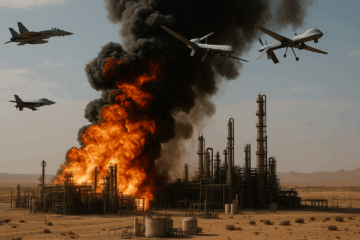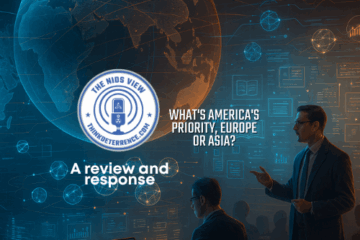The Chinese nuclear buildup, according to the former Commander of US Strategic Command, Admiral Charles Richard, is both “breathtaking” and “accelerating.” It poses a new and unique danger to the US, requiring the nation to simultaneously deter two nuclear-armed peer adversaries.
Detractors raise three challenges to the Admiral’s concerns. First, the Chinese buildup is not extensive. Second, the Chinse cannot technically build such a big force in the projected timeframe. Third, there is nothing the Chinese threaten that justifies the level of concern. Let’s examine each concern in order.
The Chinese Buildup
According to a new Department of Defense (DoD) report on the military power of China, the People’s Republic of China (PRC) nuclear arsenal grew from 200 to over 500 in just the past four years and will hit 1,000 and by 2030 and 1,500 by 2035. The 150 percent growth since 2020 is thus in the books and unprecedented.
As for the future, the key driving factor is the 300–360 new intercontinental ballistic missile (ICBM) silos that were built over the past few years. The silos are able to hold either the DF-31 or the DF-41 ICBM—capable of carrying three to ten warheads, respectively.
The additional major factor is the four new strategic nuclear-armed submarines (SSBN) projected to be fully operational by 2030, each with 20 missiles and three to six warheads per missile. The US Pacific Command says the submarines already in the Chinese fleet are currently being fitted with multiple warheads.
When combined, a reasonable estimate could project a Chinese nuclear arsenal significantly larger than the 1,500 projected for 2035. This is well above the US day-to-day operationally deployed strategic nuclear deterrent, especially given the shaky assumption that new Chinese ICBM silos will largely be filled with single warhead DF-31 missiles.
Do the Chinese have the technical capacity to build sufficiently to soon exceed the US nuclear force balance? Chinese state-run media claims that the DF-41 can carry up to ten warheads and, as James Howe explains, the PRC published a schematic of a DF-41 with ten warheads launched from a railcar.
The DF-41 has a payload of 2,500 kilograms. If one assumes this weight is split between ten warheads at 175-225 kilograms per warhead, which is feasible for a light re-entry vehicle, and reflects the Chinese trend to deploy smaller and more accurate warheads, then such an option is certainly possible.
The DoD, in the 2019 Chinese Military Power Report (CMPR), estimated that the DF-41 can carry six to ten warheads, while the 2023 CMPR now estimates the DF-41 can carry upwards of six warheads. China launched a DF-5 ICBM with ten re-entry vehicles in 2017, proving a technological capability to deploy ten warheads per ICBM.
What would the Chinese do with such a force if they built it? The United States is clearly the intended target. Critically important, as Admiral Richard told Congress, “The breathtaking growth and strategic nuclear capability enables China to change their posture and their strategy and execute any plausible nuclear employment strategy—the last brick in the wall of a military capable of coercion.”
The newly released report on the Strategic Posture of the United States concurs, noting that China and Russia repeatedly threaten the US with coercive nuclear strikes, while becoming closer allies with nuclear-armed North Korea and nuclear-aspiring Iran.
Chinese General Secretary Xi Jinping designated 2027 as the year when China should have the military capability to resolve the “Taiwan” question. That could very well mean, as Admiral Richard warned, that China is seeking to coerce or blackmail the US to stand down over any conflict involving Taiwan, believing that a significant nuclear capability gives them the leverage to do so.
America’s Response
As the Strategic Posture Commission recommended, it is not that the US must match warhead for warhead the combined force of Russia and China. But as many of the Commission members emphasized, the US needs a greater nuclear deterrent capability because the program of record is not sufficient.
A quick increase in warheads carried by the Minuteman III ICBM and Trident D-5 sea-launched ballistic missile was recommended. They also suggested acquiring more Columbia-class submarines and some mobile Sentinel ICBMs. A sea-launched nuclear-armed cruise missile capability was highly recommended as well.
A robust missile defense of the US homeland, protecting against limited nuclear coercion, is also an excellent remedy. The new strategic environment is highly dangerous because of the significant and historically unprecedented growth in Chinese nuclear forces. To sustain deterrence, the US must add credible military capability to its nuclear forces in a series of planned, serial additions while finally deploying integrated air and missile defenses protecting the US homeland.
Peter Huessy is a Senior Fellow at the National Institute for Deterrence Studies.
About the Author

Peter Huessy
Mr. Peter Huessy is President of his own defense consulting firm, Geostrategic Analysis, founded in 1981, and through 2021, Director of Strategic Deterrent Studies at the Mitchell Institute on Aerospace Studies. He was the senior defense consultant at the National Defense University Foundation for 22 years. He was the National Security Fellow at the AFPC, and Senior Defense Consultant at the Air Force Association from 2011-2016.
Mr. Huessy has served as an expert defense and national security analyst for over 50 years, helping his clients cover congressional activities, arms control group efforts, nuclear armed states actions, and US administration nuclear related policy, budgets, and strategies, while monitoring budget and policy developments on nuclear deterrence, ICBM modernization, nuclear arms control, and overall nuclear modernization.
He has also covered nuclear terrorism, counterterrorism, immigration, state-sponsored terrorism, missile defense, weapons of mass destruction, especially US-Israeli joint defense efforts, nuclear deterrence, arms control, proliferation, as well as tactical and strategic air, airlift, space and nuclear matters and such state and non-state actors as North Korea, China, Iran, Syria, Venezuela and Hezbollah, Hamas, and Al Qaeda. This also includes monitoring activities of think tanks, non-governmental organizations, and other US government departments, as well as projecting future actions of Congress in this area. His specialty is developing and implementing public policy campaigns to secure support for important national security objectives. And analyzing nuclear related technology and its impact on public policy, a study of which he prepared for the Aerospace Corporation in 2019.



